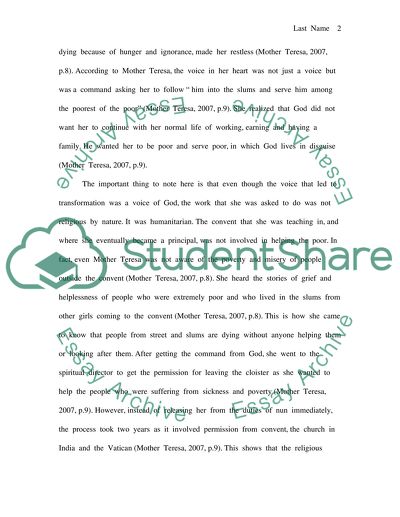Cite this document
(Mother Teresa Essay Example | Topics and Well Written Essays - 1750 words, n.d.)
Mother Teresa Essay Example | Topics and Well Written Essays - 1750 words. https://studentshare.org/biographies/1561048-mother-teresa-an-image-to-all-religions
Mother Teresa Essay Example | Topics and Well Written Essays - 1750 words. https://studentshare.org/biographies/1561048-mother-teresa-an-image-to-all-religions
(Mother Teresa Essay Example | Topics and Well Written Essays - 1750 Words)
Mother Teresa Essay Example | Topics and Well Written Essays - 1750 Words. https://studentshare.org/biographies/1561048-mother-teresa-an-image-to-all-religions.
Mother Teresa Essay Example | Topics and Well Written Essays - 1750 Words. https://studentshare.org/biographies/1561048-mother-teresa-an-image-to-all-religions.
“Mother Teresa Essay Example | Topics and Well Written Essays - 1750 Words”. https://studentshare.org/biographies/1561048-mother-teresa-an-image-to-all-religions.


